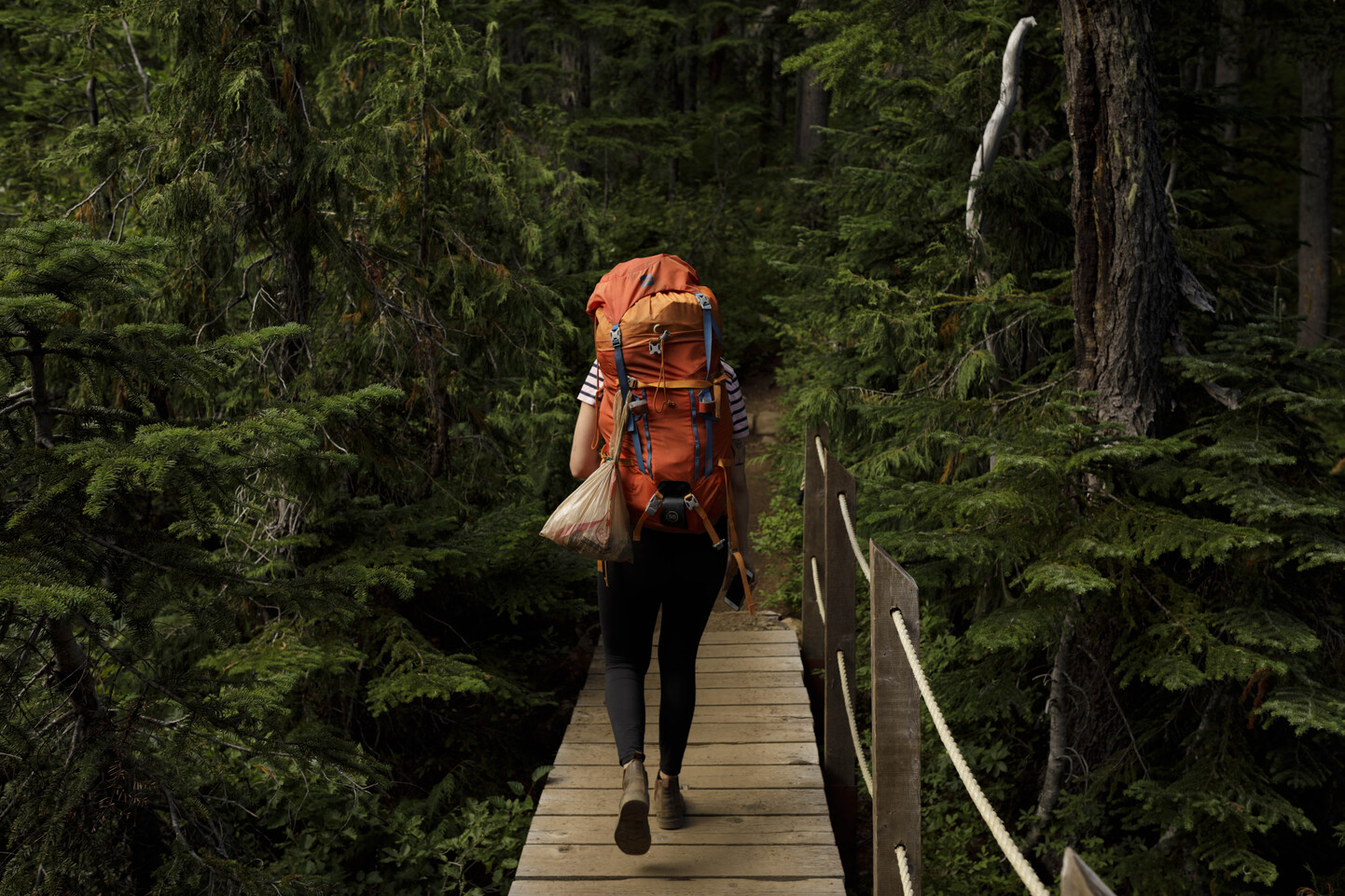The backcountry is a sensitive ecosystem. Minimize your impact on the environment by practicing Leave No Trace camping and hiking. Pack out what you pack in, take only pictures, and follow the guidelines below.
Pit toilets are for human waste
The pit toilets in the campsites work on a composting system. The maximum composting season is a short 2-3 months. This is due to the long periods of cold temperatures experienced in the sub alpine and alpine environments. Only human waste and organic materials that can be broken down quickly should be deposited in the pit toilets.
Soaps should not be deposited into the pit toilets as it destroys the bacteria that aid in decomposition. Garbage and feminine protection will not decompose, so it is essential that those items be packed out.
Use cat holes for human waste outside of campsites
Outside of the campsites pit toilets are not provided. Please observe the backcountry technique of digging cat holes for human waste. Find a suitable location away from bodies of water, and a minimum of 10 m from well traveled areas. Using the toe and heal of your boot scrape a hole 4 to 6 inches deep (some people prefer to use a small garden shovel). Do what comes natural and cover the cat hole over ensuring that the toilet paper is covered over completely. This will ensure that decomposition time is increased and unsightly waste and toilet paper is disposed of appropriately. Garbage and feminine protection will not decompose, so it is essential that those items be packed out.
Use fire rings for campfires
Fires are only permitted in the fire rings provided, which are located at Quiniscoe Lake. Never leave your fire unattended, even a small or a smouldering fire can spread. Always be sure to extinguish it completely when you leave your campsite. Fire rings are not to be used as a receptacle for your garbage that you plan to burn later. Garbage must be stored with your food in a sealed container, i.e.: Ziploc bags, away from animals. Otherwise, the garbage is spread by animals looking for a free meal or by the wind.
Keep lakes and streams clean
The lakes and streams are our only source of drinking water. Please follow some simple steps to ensure that we maintain the highest water quality possible for all visitors. When washing yourself or your dishes, dip water out of the lake, using a clean container, and move 30 m (50 ft) away, so you do not to contaminate the drinking water source. Dispose of used water by throwing it over a large area, away from your site, the sites of others, or flowing or standing water. Swimming in the lakes is permitted, however, please do not use soap!
Stay on trails
The alpine is a very sensitive area, mainly due to its very short growing season (2-3 months). To reduce the amount of impact, stay on designated trails, especially where there are switchbacks. Short cutting a switchback will increase erosion by water, and will destroy a slope, causing the trails to become muddy in the spring and difficult to follow. Also, walking single-file will reduce trail braiding (more than one path on a trail).
Leave plants and animals as you found them
Cathedral Park supports a diverse Ecosystem. Many species of plants and animals you will see depend on each other for their survival through the long harsh winters. For this reason, it is necessary that the wild flowers and trees remain undamaged, and that you do not feed the animals when visiting the park. Feeding the animals and damaging the plants will only hamper their efforts to collect and store their natural foods. In effect you are breaking the chain that has existed for centuries.
Respect re-vegetation efforts
Tent pads were constructed to minimize the impact of camping enjoyed by thousands of visitors in a few short summer months. Efforts are being made to re-vegetate the surrounding area and campsites, to provide an aesthetically pleasing environment for visitors. Please cooperate and participate with our efforts by using only the main trails and respecting our attempts at re-vegetating areas as indicated by a sign or a rope throughout the park.
